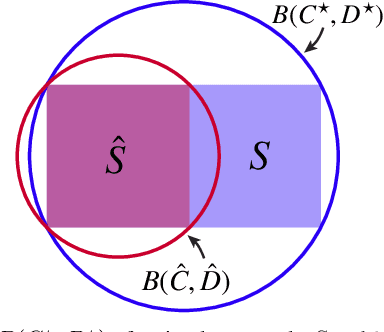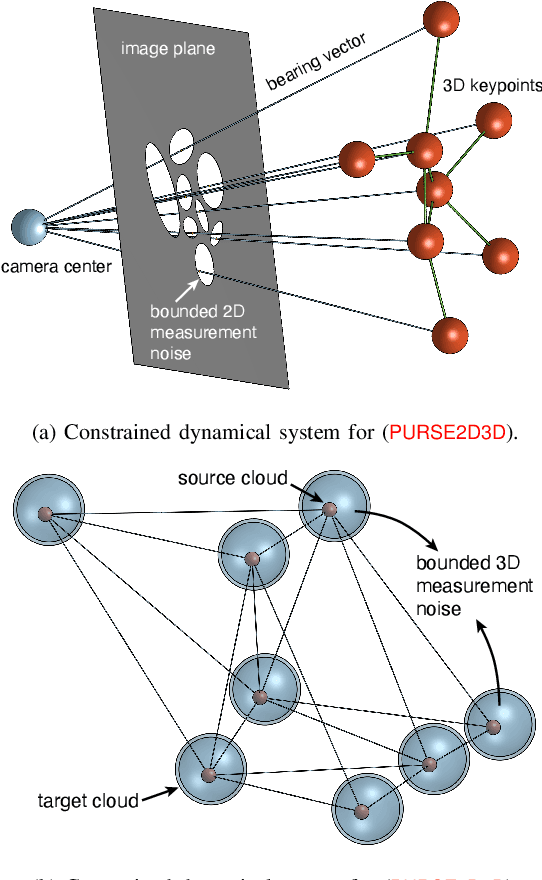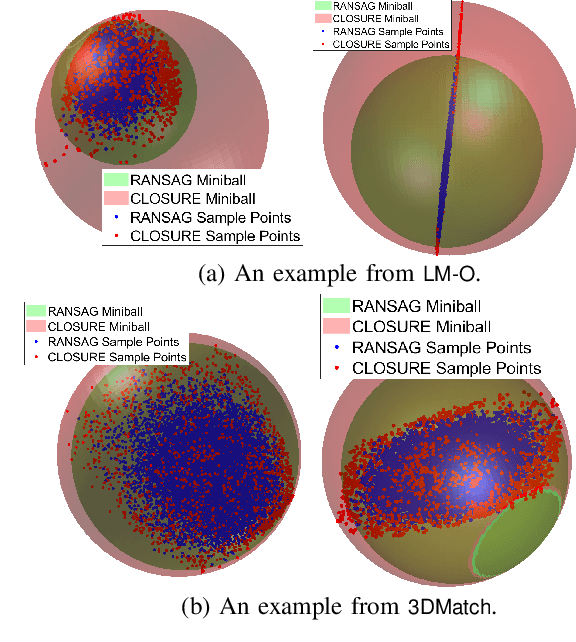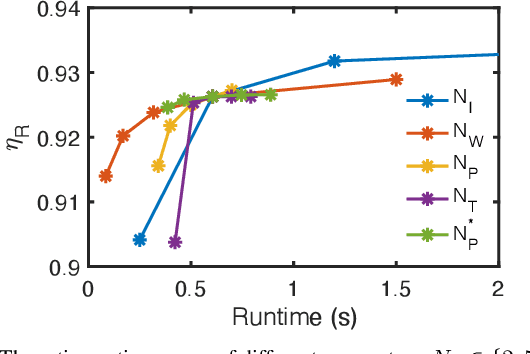Yukai Tang
CLOSURE: Fast Quantification of Pose Uncertainty Sets
Mar 15, 2024



Abstract:We investigate uncertainty quantification of 6D pose estimation from keypoint measurements. Assuming unknown-but-bounded measurement noises, a pose uncertainty set (PURSE) is a subset of SE(3) that contains all possible 6D poses compatible with the measurements. Despite being simple to formulate and its ability to embed uncertainty, the PURSE is difficult to manipulate and interpret due to the many abstract nonconvex polynomial constraints. An appealing simplification of PURSE is to find its minimum enclosing geodesic ball (MEGB), i.e., a point pose estimation with minimum worst-case error bound. We contribute (i) a dynamical system perspective, and (ii) a fast algorithm to inner approximate the MEGB. Particularly, we show the PURSE corresponds to the feasible set of a constrained dynamical system, and this perspective allows us to design an algorithm to densely sample the boundary of the PURSE through strategic random walks. We then use the miniball algorithm to compute the MEGB of PURSE samples, leading to an inner approximation. Our algorithm is named CLOSURE (enClosing baLl frOm purSe boUndaRy samplEs) and it enables computing a certificate of approximation tightness by calculating the relative size ratio between the inner approximation and the outer approximation. Running on a single RTX 3090 GPU, CLOSURE achieves the relative ratio of 92.8% on the LM-O object pose estimation dataset and 91.4% on the 3DMatch point cloud registration dataset with the average runtime less than 0.2 second. Obtaining comparable worst-case error bound but 398x and 833x faster than the outer approximation GRCC, CLOSURE enables uncertainty quantification of 6D pose estimation to be implemented in real-time robot perception applications.
Uncertainty Quantification of Set-Membership Estimation in Control and Perception: Revisiting the Minimum Enclosing Ellipsoid
Nov 27, 2023Abstract:Set-membership estimation (SME) outputs a set estimator that guarantees to cover the groundtruth. Such sets are, however, defined by (many) abstract (and potentially nonconvex) constraints and therefore difficult to manipulate. We present tractable algorithms to compute simple and tight overapproximations of SME in the form of minimum enclosing ellipsoids (MEE). We first introduce the hierarchy of enclosing ellipsoids proposed by Nie and Demmel (2005), based on sums-ofsquares relaxations, that asymptotically converge to the MEE of a basic semialgebraic set. This framework, however, struggles in modern control and perception problems due to computational challenges. We contribute three computational enhancements to make this framework practical, namely constraints pruning, generalized relaxed Chebyshev center, and handling non-Euclidean geometry. We showcase numerical examples on system identification and object pose estimation.
 Add to Chrome
Add to Chrome Add to Firefox
Add to Firefox Add to Edge
Add to Edge